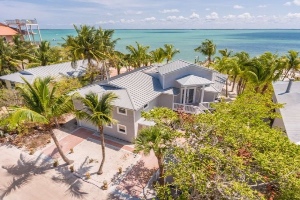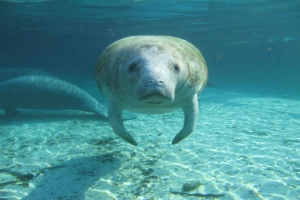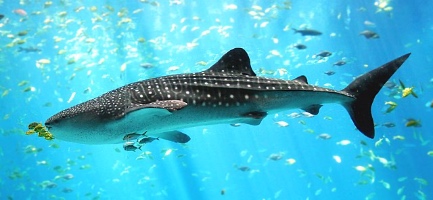Florida’s North Captiva Island, located in the Gulf of Mexico, is about as far away from the chaos of everyday life as you can get, while still staying within the United States. I had heard it’s almost similar to Thailand or Indonesia in its exoticism, with the heat and humidity…and bugs. But I went into my research with an open mind and now I’m trying to convince any of my friends and family to take a trip to explore the island with me.
 As you may expect, being as remote and as small as it is - 4 miles long and 1/2 mile wide at its widest point! - getting to North Captiva Island takes some planning as it is only accessible by water taxi or private charter boat. The Southwest Florida International Airport in Fort Myers, Florida is the closest airport to North Captiva Island and most major airlines service this airport. From there, take the Pine Island Taxi to Pineland Marina and board the Island Girl – the only scheduled ferry to North Captiva Island.
As you may expect, being as remote and as small as it is - 4 miles long and 1/2 mile wide at its widest point! - getting to North Captiva Island takes some planning as it is only accessible by water taxi or private charter boat. The Southwest Florida International Airport in Fort Myers, Florida is the closest airport to North Captiva Island and most major airlines service this airport. From there, take the Pine Island Taxi to Pineland Marina and board the Island Girl – the only scheduled ferry to North Captiva Island.
Sidebar: Because the island is sosecluded, you have to either bring what you will need for your trip with you, plan ahead to make sure it will be there for you, or a combination of the two. This applies to groceries, bottled water, basic first aid supplies (aspirin, bandaids, etc), bug repellent, and especially produce – be sure to check with your airlines and local customs on rules regarding bringing produce onto the island. Most travelers opt to fax their order – at least 48 hours before you will arrive on the island – to Publix Santa Barbara grocery store, on the mainland (Pine Island Taxi will stop at Publix on the way to the marina). They will take your grocery order and pack your items for easy transport. There is a small grocery on the island, but it stocks mostly convenience items is ridiculously expensive.
 Once on the island, be prepared to sloooooow down and take in the natural beauty that surrounds you. There are no cars and no paved roads on North Captiva. Bicycles and electric golf carts (a private golf cart and/or bicycles are included in most North Captiva Beach House vacation rentals, so be sure to inquire about this at the time of booking) are used to explore our sandy paths.
Once on the island, be prepared to sloooooow down and take in the natural beauty that surrounds you. There are no cars and no paved roads on North Captiva. Bicycles and electric golf carts (a private golf cart and/or bicycles are included in most North Captiva Beach House vacation rentals, so be sure to inquire about this at the time of booking) are used to explore our sandy paths.
There are over 5 miles of beaches to explore. Visitors report strolling for hours without seeing anyone else – you will, however, run into some local wildlife. Two-thirds of the island’s 700 acres are a protected State of Florida wilderness park and wildlife sanctuary for manatees, loggerhead turtles and over one hundred species of migratory birds.
If your idea of a vacation is body shots and disco music, Captiva is not for you. The 50 or so year-round residents operate on “island time” and there are very few established businesses. Island activities include shelling, snorkeling, charter sport-fishing, swimming, kayaking, boating, stargazing, bird watching, dining at one of the 2 restaurants and island hopping…Sanibel, Pine Island, Cayo Costa, and Useppa are all within minutes by boat.
So, despite that fact that every article and travel forum I read about North Captiva stressed the need for Deet-strength bug repellant, I’m not scared. I’m harnessing my inner Robinson Crusoe, packing my spray (and maybe a mosquito net) and going to check out this beautiful and remote island for myself! North Captiva Island is one of the few places left that has mastered the delicate balance between man and nature. This unique island paradise is not for everybody – but as the locals will say, it was never intended to be!

 Known as the “cow of the sea,”
Known as the “cow of the sea,”  I’m sure you’ve seen the pictures of divers swimming next to sharks that look about as big as a school bus, and thought to yourself, “um, hasn’t this guy seen Jaws?!” Well lucky for him, though these enormous creatures (they can grow upto 40 feet in length!) are sharks, they are only
I’m sure you’ve seen the pictures of divers swimming next to sharks that look about as big as a school bus, and thought to yourself, “um, hasn’t this guy seen Jaws?!” Well lucky for him, though these enormous creatures (they can grow upto 40 feet in length!) are sharks, they are only  A different type of shark encounter entirely, many outfits in the Bahamas offer opportunities for vacationers to defy their basic human instincts and swim with some of the world’s fiercest predators in their natural environment. Shark dives and feeds can be found in almost every area of the
A different type of shark encounter entirely, many outfits in the Bahamas offer opportunities for vacationers to defy their basic human instincts and swim with some of the world’s fiercest predators in their natural environment. Shark dives and feeds can be found in almost every area of the  Vacationers who want to swim with dolphins should look for opportunities where the dolphins are wild and free in their natural habitat, rather than with dolphins that are in captivity for the sole purpose of pulling tourists around all day.
Vacationers who want to swim with dolphins should look for opportunities where the dolphins are wild and free in their natural habitat, rather than with dolphins that are in captivity for the sole purpose of pulling tourists around all day.